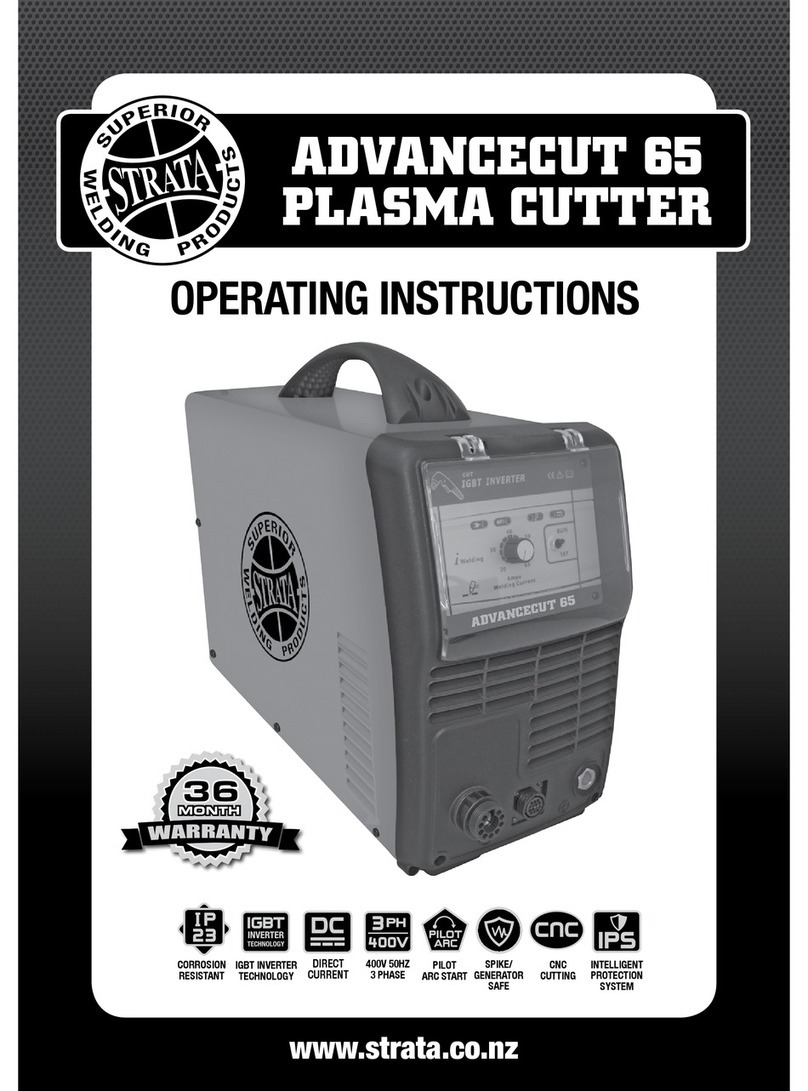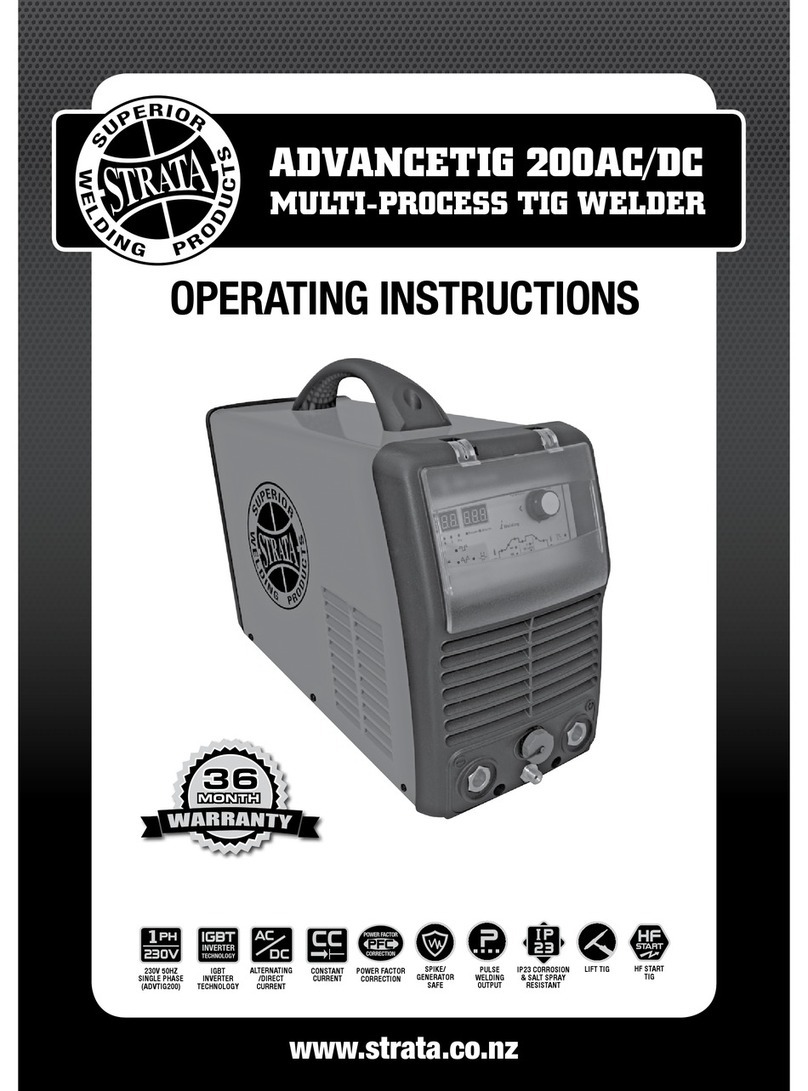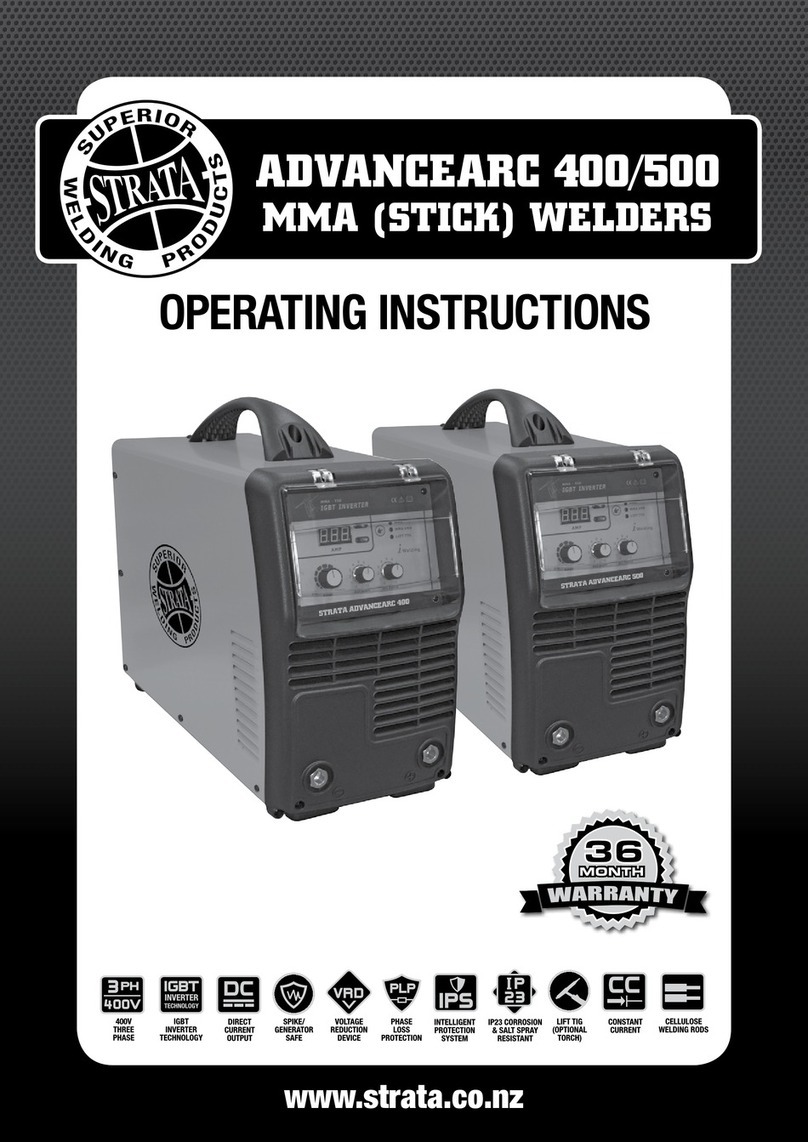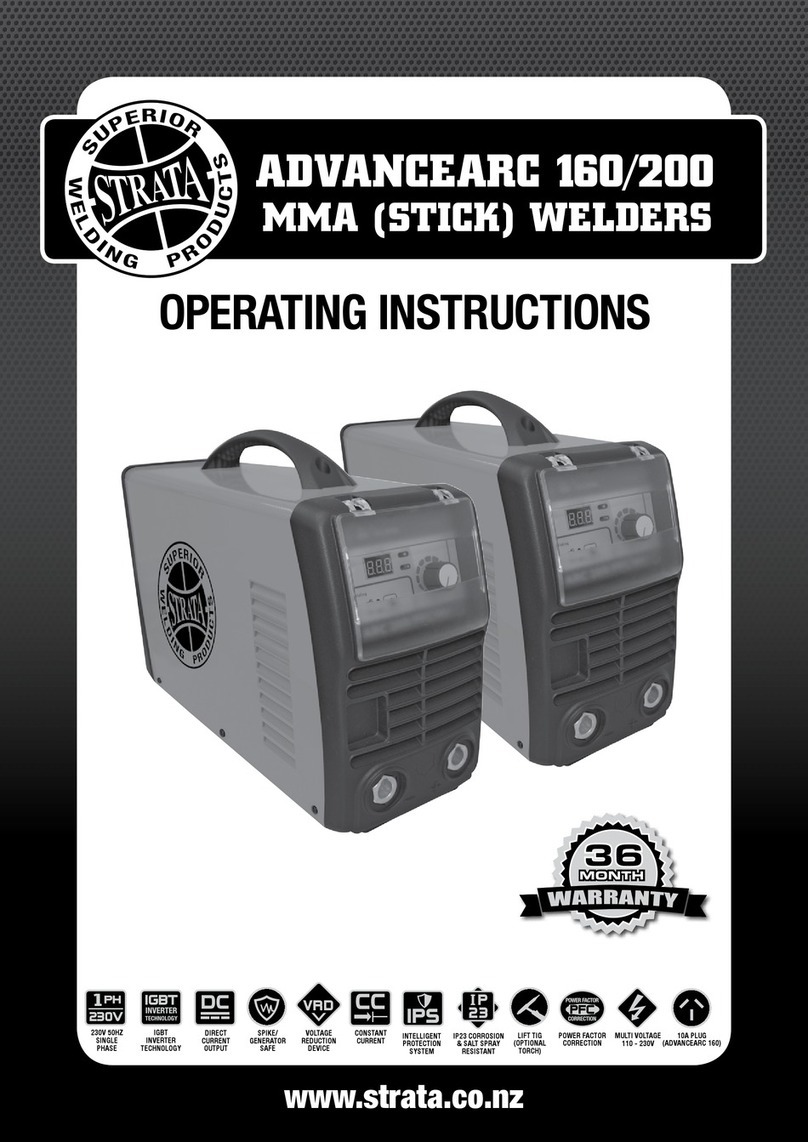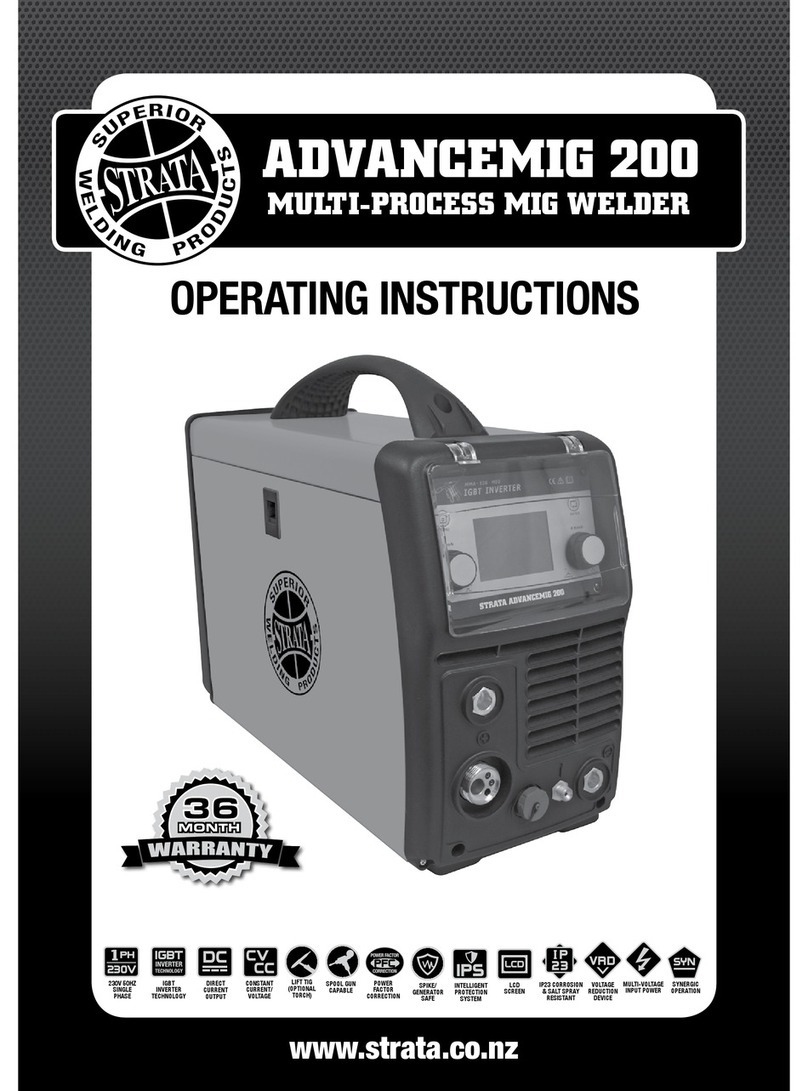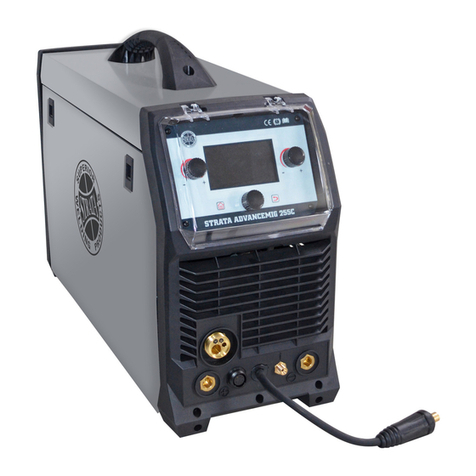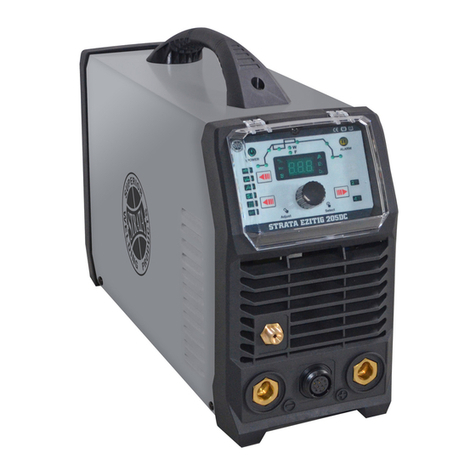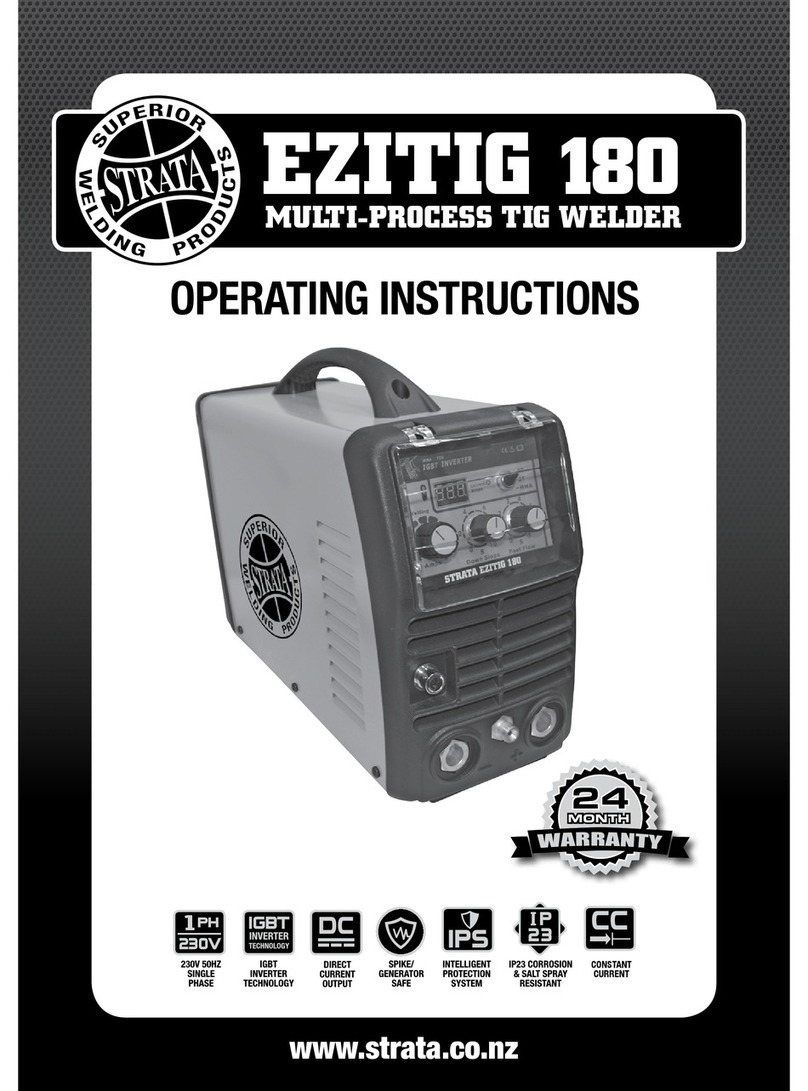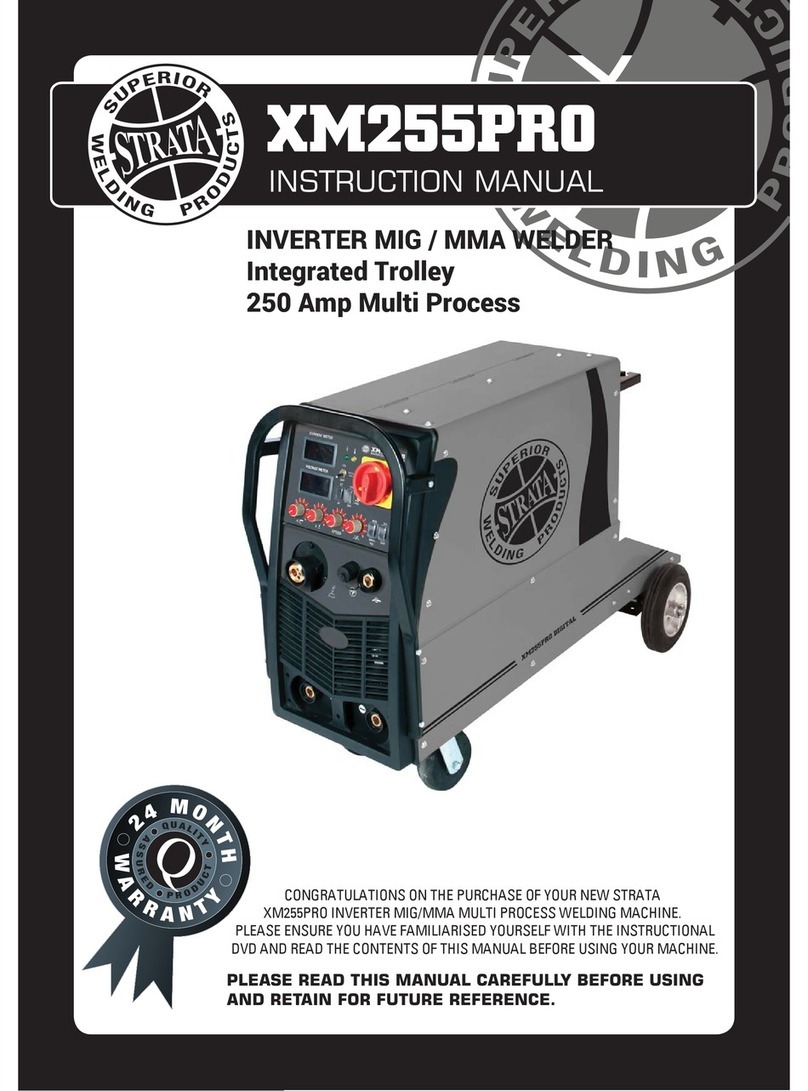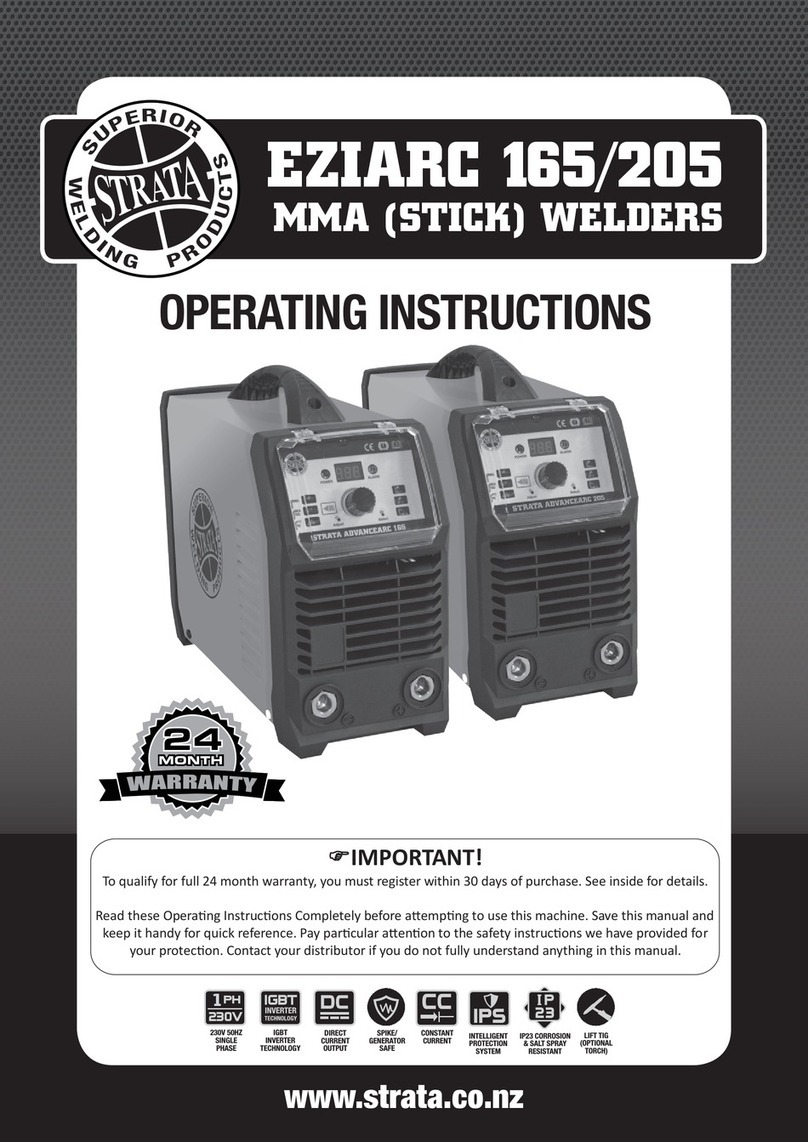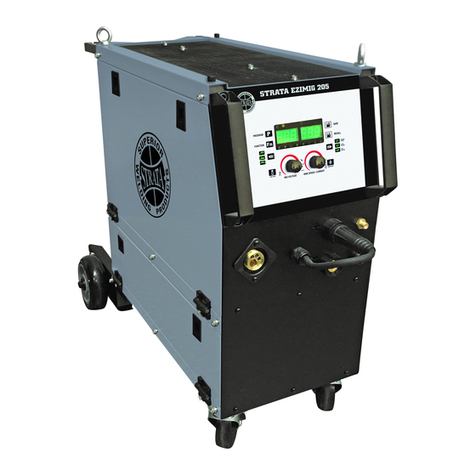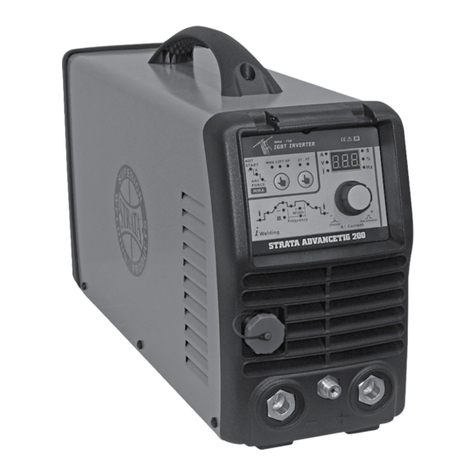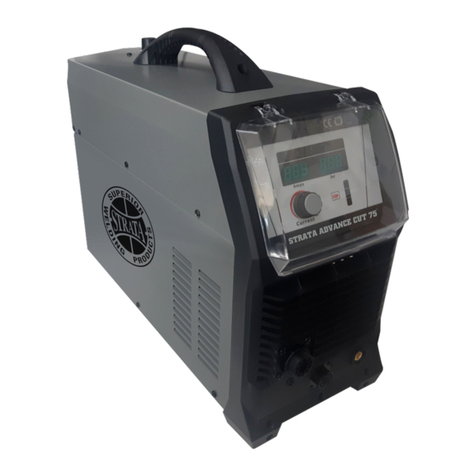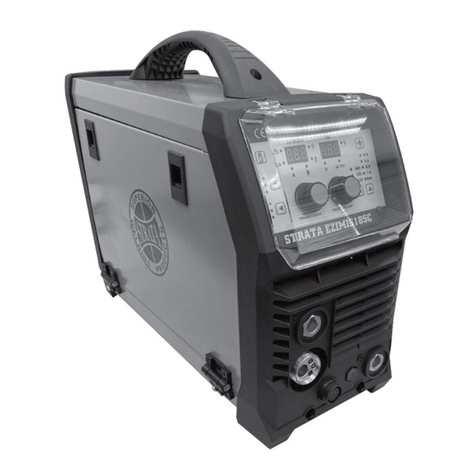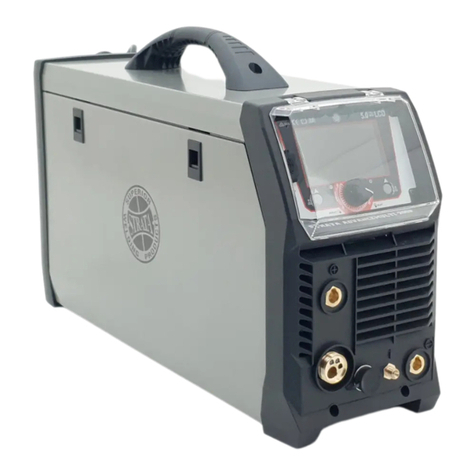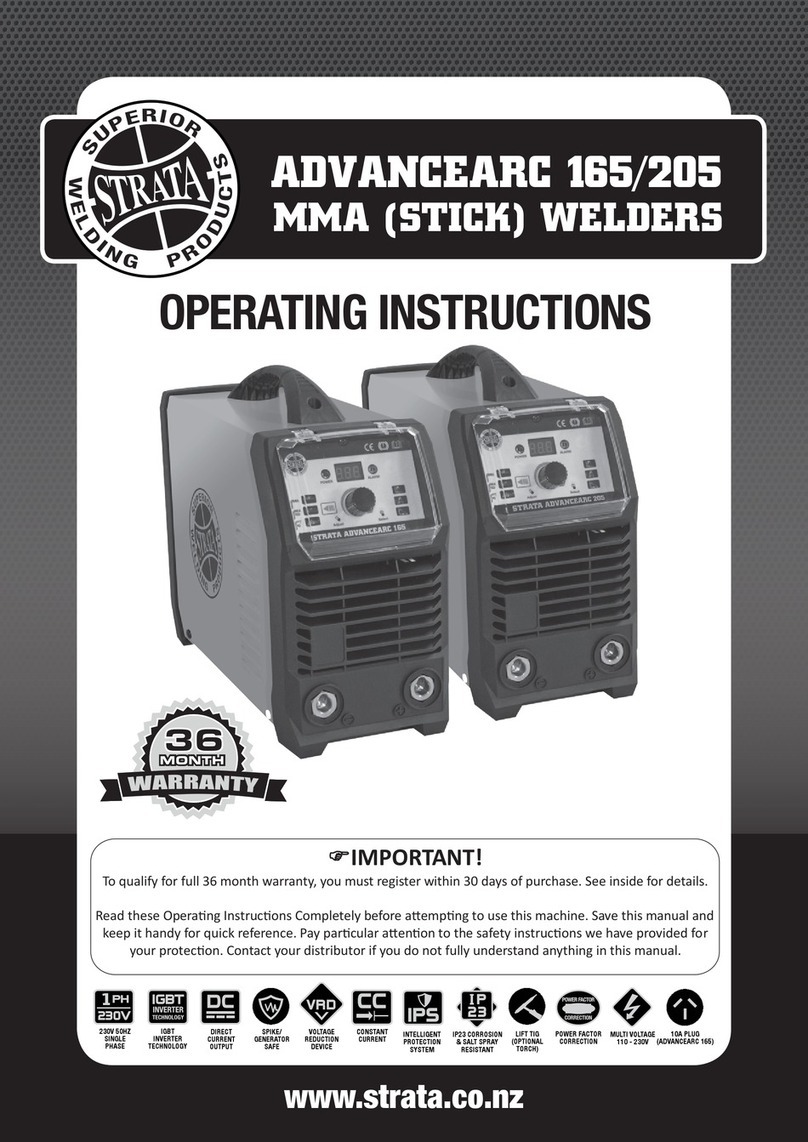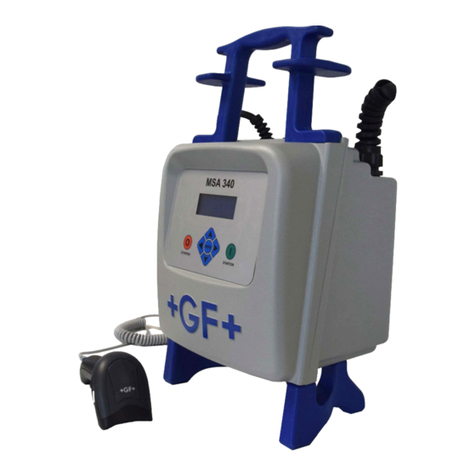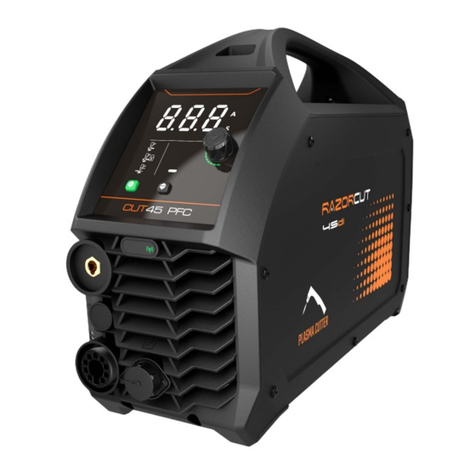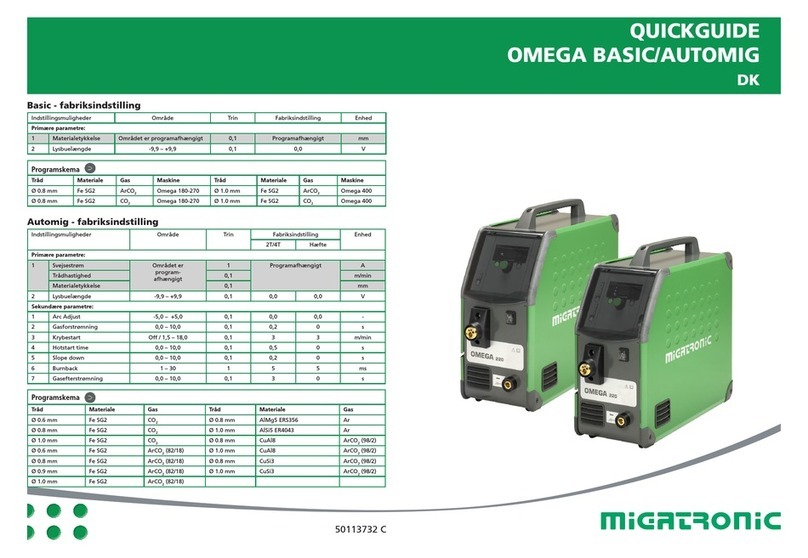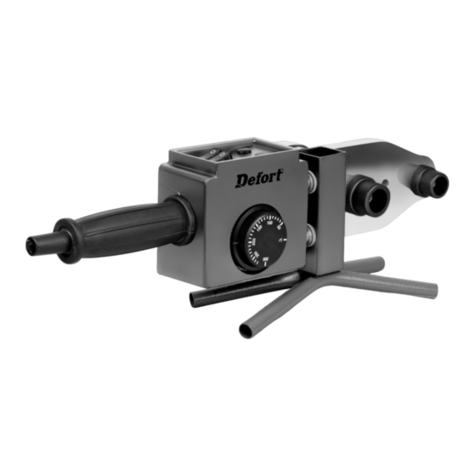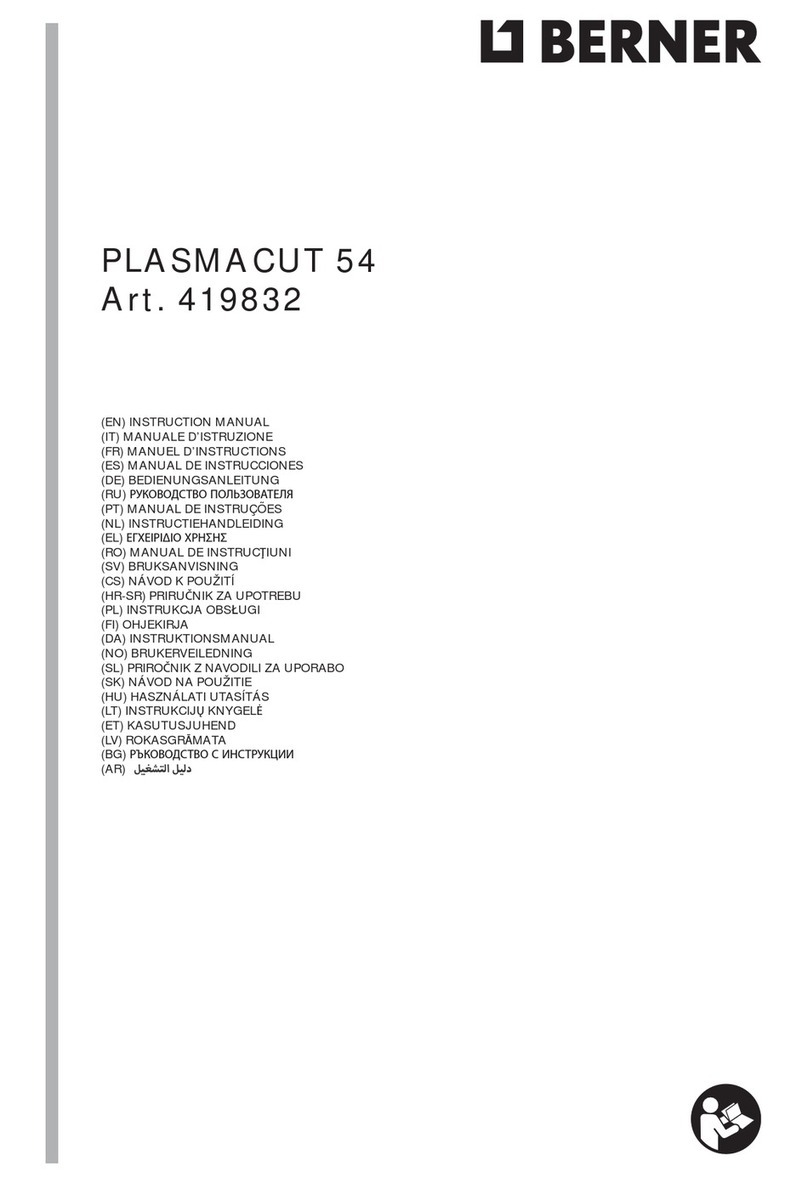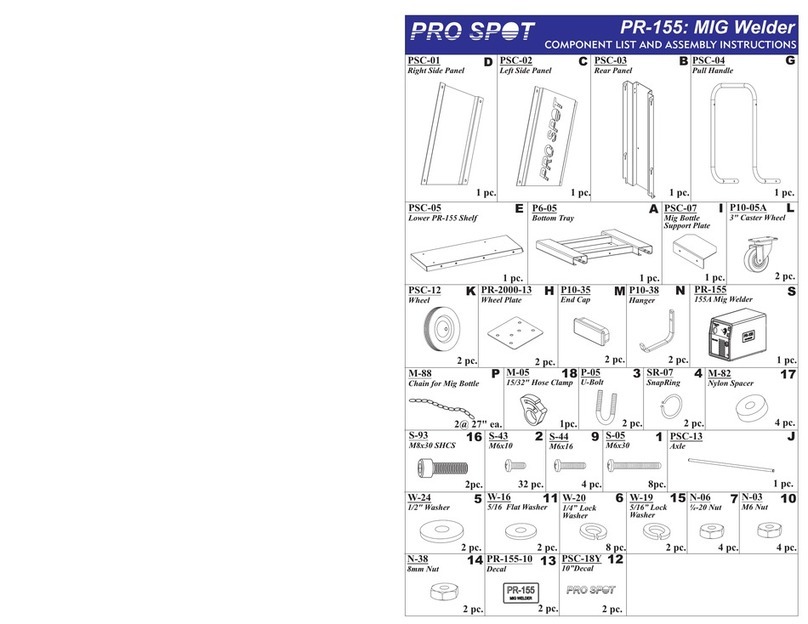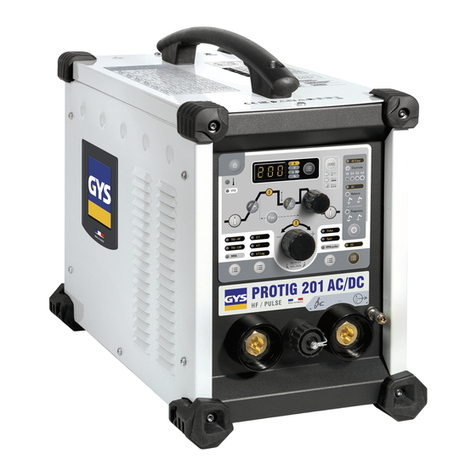
8www.strata.co.nz
ADVANCETIG 320AC/DC
lowing use of a pointed tungsten tip shape for a more
defined arc.
AC Frequency Adjustment (42)
IncreasingACfrequencywillfocustheshapeofthe
arc, resulting in a tighter, more controlled arc causing
increased penetration and less heated affected area
for the same current setting. Slower frequency will
result in a wider, softer arc shape.
AC/DC Output Modes
DC (Direct Current) Welding Output (21)
SuitableforTIGweldingferrous(ironbased)metals
such as mild steel and stainless steel, copper and ti-
tanium.AlsoformostMMAapplications.
TIG welding reactive metals such as Aluminium,
Magnesium and Zinc requires AC (alternating cur-
rent) output. When reactive metals are exposed to air
they form an oxide layer that insulates the base metal
and prevents welding current flowing, it also contami-
natestheweldpool.Reversecurrentflowisrequired
tobreakthrough/cleanoffthisoxidelayer so that
welding can take place, while the current flow during
the positive cycle does the majority of the heating of
the weld pool area.
AC Triangle Wave Welding Output (22)
Reducedheatinputforsamecurrentsetting.Espe-
cially useful for welding thin metal.
AC Sine Wave Welding Output (23)
TraditionalACTIGweldingwaveform.Quieter,‘soft’
arc characteristic
AC Square Wave (24)
Focused arc for maximum penetration, fast travel
speed with best directional control. Also used for
someMMAapplications.
TIG Arc Starting Modes
27/28 TIG HF/ Lift Ignition Modes.
ForTIGweldingprocess,contactofthetorchtung-
sten to the workpiece will cause contamination of the
tungsten and the workpiece that will adversely affect
the weld quality, especially when the tungsten is elec-
tricallyenergised.HF(highfrequency)ignitionsends
a pulse of high energy electricity through the torch
system that is capable of ‘jumping’ between the tung-
sten and the workpiece, ensuring arc starting without
any contact between the tungsten and workpiece. The
disadvantageofHFignitionisthatthehighenergy
electrical pulse creates significant electrical and radio
signal interference, which limits its use around sensi-
tive electronic equipment such as computers.
Lift TIG ignition is a compromise that minimises
tungsten contamination while eliminating the electri-
calinterferenceofHFstartsystems.Liftarcstart-
ing works by lightly resting the tungsten on the work
piece, activating the torch trigger signal and then
lifting the tungsten off. The control circuit will sense
when the tungsten is removed from the work piece
and send a low powered pulse of electricity through
thetungstenthatwillcausetheTIGarctoinitiate.Be-
cause the tungsten is not ‘live’ when it is in contact
with the work, contamination is minimised.
Program/Job Memory
TheAdvanceTig320ACDChas10memory/jobspac-
es that parameters can be saved to for easy recall. To
access a saved program, press and hold in the con-
trolknob(19)andtheprogramnumber0-9willshow
onthedisplay,the‘JOB’indicatorwillbelit.Adjustto
the program number required by rotating the control
knob. Once the program is accessed, it will automati-
cally load. To return to normal parameter settings,
press the control knob again (which will also load the
selected program) To save parameters set as a pro-
gram, press and hold the control knob for a few sec-
onds and the display will blink. The settings are now
savedinthelastprogramspacethatwasselected.If
setting parameters to save as a program, ensure that
you start with a program number that the data is OK
to overwrite, as the previous settings saved to that
memory space will be lost.
